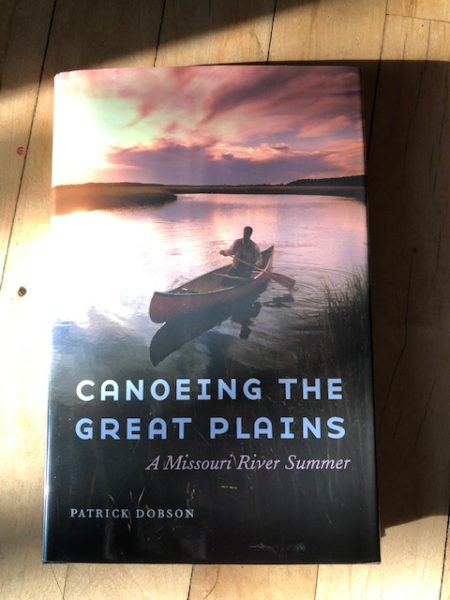 Although the Great Plains has often been described as a “sea of grass,” the title of this blog does not refer to paddling through the tall grasses (or short grasses) in a canoe. While that would be poetic, creative, and silly, and part of me really enjoys the imagery, it instead refers to Patrick Dobson’s book by the same name. Canoeing the Great Plains is the excellent follow-up book to Seldom Seen, which I wrote about previously. Canoeing the Great Plains is part real-world adventure, part personal adventure, and part love letter to the Great Plains.
Although the Great Plains has often been described as a “sea of grass,” the title of this blog does not refer to paddling through the tall grasses (or short grasses) in a canoe. While that would be poetic, creative, and silly, and part of me really enjoys the imagery, it instead refers to Patrick Dobson’s book by the same name. Canoeing the Great Plains is the excellent follow-up book to Seldom Seen, which I wrote about previously. Canoeing the Great Plains is part real-world adventure, part personal adventure, and part love letter to the Great Plains.
Dobson begins this final leg of his adventure in Helena, MT with the intention of canoeing the Missouri River all the way to his hometown of Kansas City, MO. This is his return journey as he had walked from KC to Helena in the book Seldom Seen. This would be a brave trip for an experienced canoeist, but Dobson is little more than a beginner, so as a result, even launching the canoe at all becomes a remarkable and commendable leap of faith.
The real-world adventure involves everything a river running through the Great Plains can throw at you, and then some – wind, waves, currents, storms, wildlife and bugs! I wouldn’t have guessed that Fort Peck reservoir would be as mosquito-infested as it was when he was there. It’s obvious no one else did either, as he describes the reactions of others at the campground where he lands his canoe.
“On my way back to the tent, I passed an old man and woman with a minivan parked in the dim light under the cottonwoods. They chased each other around their car in circles, cursing each other and the insects. Under the trees, they set cans of household insecticide that laid in a low fog around the van. As far as I could see, it affected the evil, whining clouds not at all.”
Dobson’s personal adventure is an existential one. Trapped in a soul-crushing job, suffering from a busted relationship, battling alcoholism, and trying to raise a kid, he lights out for the territories to find out who he is and what he’s made of. The vast spaces and winds of the Great Plains prove to be an effective teacher by eliminating the insulating layer of civilization.
“Investing my personal being and energy in the Missouri, I came to know it intimately, The boundaries between it and me became fuzzy., gray, and incredibly deep and complex. I was a part of the river as much as it was of me. I shaped it, and it shaped me, in a relationship that will continue until I die.”
Dobson also encounters a host of characters along the way who always seem to be the right person in the right place at the right time. It’s amazing how an adventure can do that – like long-distance trail “magic.”
Above all, Dobson is a lover of the Great Plains. His whole adventure is based on an affinity for the plains he developed as a kid on trips out west with his family. In my opinion, the best adventures are in places you already know and love. Sure, you can go climb Mt. Everest or raft the Zambezi, but if you have no personal connection to it, then it’s just for the bragging rights. Some people prefer a deeper connection with a place. Dobson understands this.
“As I floated through the White Cliffs, I saw through the eyes of that kid again. I paddled up to Citadel Rock, the subject of my favorite (Carl) Bodmer painting. The dark stone jutted up out of the riverbank like an ice cream cone dropped on a sidewalk. I touched it, still disbelieving I was here. The rock was cool, and the water flowed translucent beneath us. There, earth met sky and water; and in the river. I saw storm, landscape, and stars.”

